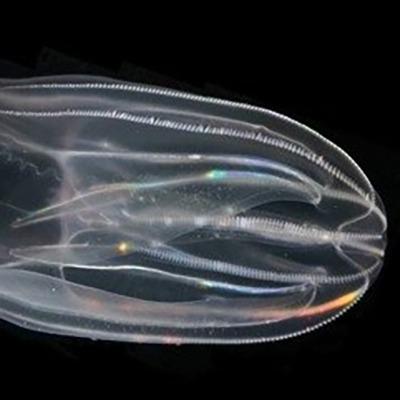
Recent publication studying possible lethal effects of oil and dispersants on Ctenophores
A recent study from the University of Delaware published in Aquatic Biology explored the effects of oil-spill related chemicals on the ctenophore Mnemiopsis leidyi. M. leidyi is an important species in the pelagic ecosystem, acting as both predator and prey for many other species. It has been suggested that they may serve as vectors of hydrocarbons in pelagic food webs. Polycyclic aromatic hydrocarbons (PAHs) accumulate in their tissues following oil exposure. PAHs then accumulate in the tissues of their predators, and so on.
M. leidyi reactions to oil, dispersed oil, and chemical dispersant were studied at different temperatures. These temperatures reflect ocean temperatures during different seasons, providing information about effects of spills occurring at different times of the year. The sublethal effects studied were respiration rate, bioluminescence, and glutathione-s-transferase (GST) activity. Respiration rate can serve as a proxy for metabolic rate. Bioluminescence is usually used as a predator deterrent. Increased GST activity indicates upregulation of cellular detoxification pathways.
Mortality of M. leidyi was found to be concentration dependent at both temperatures for all three chemicals. Higher mortality occurred at higher temperatures and concentrations. However, oil concentrations in the Gulf of Mexico following the Deepwater Horizon spill were well below lethal levels for M. leidyi at both temperatures. Similarly, concentrations of dispersant used in this study were higher than what would be found in the ocean during mitigation for an oil spill. The dispersant was more toxic than the crude oil, and apparently increased the toxicity of the oil when mixed. PAH concentrations in tissues were largest when exposed to chemical dispersant and smallest when exposed to oil with no dispersant.
There was no significant difference in respiration rate when exposed to any of the chemicals. This indicates that there was no increase in aerobic metabolic demand due to upregulation of detoxification pathways or locomotive attempts to avoid oil. However, the author suggests that this topic be studied in more depth to determine if changes in respiration rates occur over a shorter or longer time period than the one studied. The oil and dispersed oil had no significant effect on GST activity, but increased dispersant concentrations did result in high GST activity. The total amount of bioluminescent light emitted decreased as concentrations of all three chemicals increased. This was dependent on temperature, as bioluminescence is temperature dependent in normal conditions. The cause for these increases is unknown. It is also unknown how bioluminescence would be affected outside the lab, in natural predator-prey interactions.
For more information and to read the full article, visit the University of Delaware’s Library webpage.


